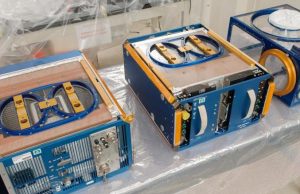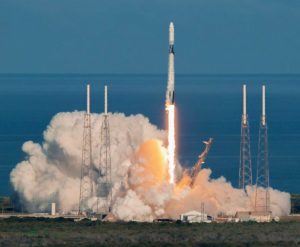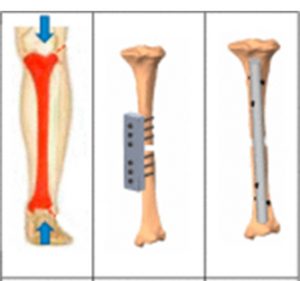On earth and high above it, Sheidaei research and teaching is influential
Author: John Burnett-Larkins
Author: John Burnett-Larkins
It’s all in the details, as they say.

And in the case of research being conducted by Department of Aerospace Engineering assistant professor Azadeh Sheidaei, the details surround microscopic structure of materials and how they interact. Her work is at the interface of biomechanics, computational mechanics, computational statistics, scientific machine learning and engineering design.
Microstructure Reconstruction and Design via Machine Learning
Dr. Sheidaei utilizes scientific machine learning methods to design and reconstruct a wide range of microstructures such as alloys, geological, biological and composite materials. The overarching goal of this research is to understand the links between materials processing, the structure of the material and the resultant macroscopic properties of the material.
Sheidaei’s research reaches for the stars in NASA study of bone loss in space

In January 2018, Dr. Sheidaei opened a new chapter in biological materials and established a new research area at Iowa State in the field of health in space.
The International Space Exploration Coordination Group (ISECG) plans to advance a long-range human space exploration strategy and enabling human presence on Mars. NASA’s first human mission to the vicinity of Mars is expected in the mid-2030s, and a human landing on the Martian surface is anticipated for the 2040s.
During this mission, astronauts will be exposed to the longest microgravity and cosmic radiation conditions in the history of spaceflight. Defining potential health implications of such exposure is necessary before proceeding with interplanetary explorations.

One of the adverse effects of exposure to microgravity is the loss of bone mass in the spine and lower limbs in astronauts. In collaboration with ISSNL (International Space Station National Lab), Dr. Sheidaei is developing a first-of-its-kind bone degradation predictive model by utilizing her expertise in statistical microstructure reconstruction and evolution of heterogeneous materials.
This project seeks to study the bone microstructure breakdown of mice flown on the ISS as part of Rodent Research Reference Mission-2. The research team will use this data to build on their bone model to better inform the science of aging in bones and improve osteoporosis treatment. By developing a model of how bone microstructure changes with aging, the researchers can develop patient-specific diagnosis tools.
Design and Additive Manufacturing of Metamaterials

Metamaterials are engineered to have a property that is not found in nature, and applications are numerous – from vibration control to morphing structures to medical implants.
In collaboration with Professor Karl Kraus of the Iowa State University College of Veterinary Medicine, Dr. Sheidaei and graduate students Mohamad Saber Hashemi and Aaron McCrary have invented a medical implant to accelerate the healing of the broken bone by using a tunable stiffness bone rod which was designed, optimized, and 3D printed. It addresses the shortcomings of existing bone fixation devices, such as stress shielding and bone nonunion in the healing of fractured bones.
This research has been published in the prestigious Journal of the Mechanical Behavior of Biomedical Materials [LINK] and is subject of an approved pending patent.
Teaching and outreach
Dr. Sheidaei is teaching Aerospace Engineering 421 – Advanced Flight Structures, and Engineering Mechanics 510-Continuum Mechanics. She established a virtual finite element analysis computer lab for the AerE 421 course that facilitated the transition to online delivery in response to COVID-19.
She has participated in the Academic Program for Excellence (APEX), a program which assists multicultural students transition to Iowa State and her lab is also participating as a research project mentor in the 2021 LUANCH-UAS Research Experience for Undergraduates summer program.